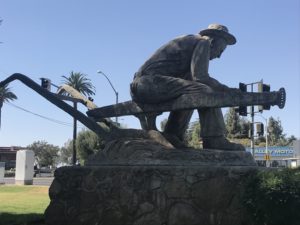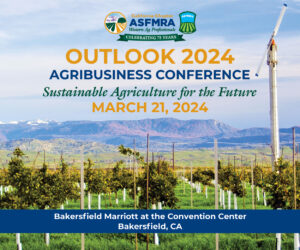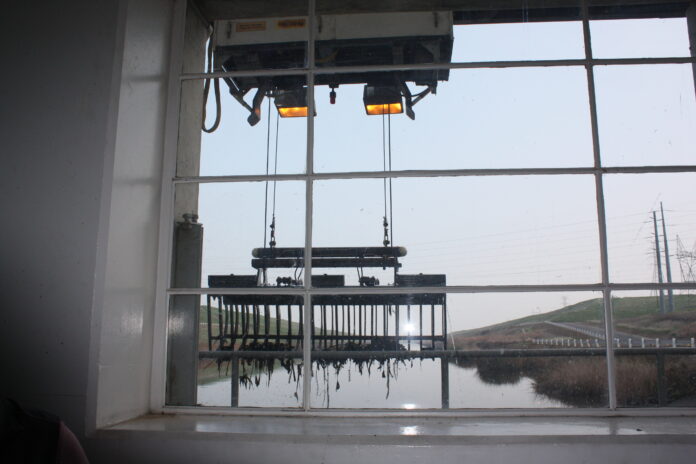Editor’s note: This is part two of a two part report on the State Water Resources Control Board’s hearing on the Bay/Delta Plan.
The State Water Resources Control Board’s staff have written a draft report dealing with updates to the Water Quality Control Plan for the San Francisco Bay/Sacramento-San Joaquin Delta Estuary, also known as the Bay-Delta Plan. A public comment hearing and staff workshop was held Monday, December 11, 2023 starting at noon, on Zoom and in-person at the Joe Serna Jr. CalEPA Building in Sacramento. There have been two other such hearings earlier on November 17th and December 1st. The executive summary of the report was 69 pages. But take heart, more than half the pages are charts and graphs and such. Multiple links to the report are attached after the report and just those alone took up two single spaced pages to list.
For a few years now we’ve been hearing about the Voluntary Agreements, shorted to VAs. They have a new name, Healthy Rivers & Landscapes. It’s true the agreements were voluntary because the alternative would be unimpaired flows, but participation is mandatory. So, that’s part of the name change. I’m sticking with VA for this report.
The VA Panel
A panel with David Guy of the Northern California Water Association and others. Guy said the VAs are fully implementable and enforceable. It’s a collaborative effort and that’s the best way to make this happen.
Guy said there are flows with function. A healthy river ecosystem needs flows but just throwing water at it with connections to other functions isn’t going to help. (It hasn’t so far.) Habitat and improved infrastructure is also needed.
Nina Hawk of Metropolitan WD said there has been skepticism but this plan has been developed with the best available science. Systemwide governance including tribes is a part of this. Met owns land in the Delta and is ready to work with its neighbors.
Hawk said the State Board is the backstop to this plan. It will have an important oversight function and there is an opt out if the VAs don’t work. She is concerned the CVP and SWP won’t be able to meet their obligations if unimpaired flows are the only solution and have a significant negative impacts throughout the state.
Hawk said the unimpaired flows don’t take into consideration the flexibility needed to enhance habitat. New fish studies show a good increase of salmon populations and health by including the habitat as a priority.
J. Scott Petersen of the San Luis Delta Mendota Water Authority was the next speaker. He said the San Joaquin Valley is tied to the health of the Delta. The unimpaired flows will harm the wildlife refuges in the Valley and the local economy. The impacts are drastic.
Petersen said the food production in the San Joaquin Valley is the basis for America’s diet. Studies show how reducing water exports has a direct correlation on increasing poverty in the Valley. The unimpaired flows will not only hit the ag based economy but will harm the drinking water quality of the disadvantaged communities.
Petersen said the unimpaired flows could reduce the wildlife refuges by half. The VAs increase the economic opportunities for the DACs and help make stronger wildlife habitat.
Andy Fecko of the Placer County Water Agency said the participation of public water agencies has become more cooperative as the science became clear there are pathways besides the more flows scenario. He said the VAs have been under way for a decade. He believes the VAs are the best way to provide the means necessary to improve the environment and provide needed supplies.
Hawk said nonflow measures are key in making the Delta, the wildlife and the people who depend on the water.
Esquivel thanked the panel and said he realizes as the water supplies wanes the local economy is harmed. He asked when the CVP was getting a full supply how was the local economy? Petersen said the SJV is the poorest part of the state but it is poorer now than when the water supply was more stable.
Maguire asked what worries the panel. Fecko said the cycle of drought and wet has been the reason the VAs have built in flexibility that has never existed in the state’s water management. Hawk said it comes down to climate change is here and the need for nonflow action in real time has never been greater. Guy said inertia is needed but that doesn’t make sense to me. He welcomed those who doubt to roll up their sleaves and join in on finding a solution. Petersen was concerned about the length of the program. He said salmon have three year life cycles and an eight year term may not yield enough data.
solution. Petersen was concerned about the length of the program. He said salmon have three year life cycles and an eight year term may not yield enough data.
Public Comments
Michael Hadley of Western Water Agency spoke in favor of the VAs. They are a part of Met’s service and see the VAs supporting statewide cooperation in water in California. The state needs to invest along with others in infrastructure improvements.
Ian Buck-Macleod of Friant Water Authority spoke saying agreements with the Exchange Contractors places Friant would be in jeopardy should unimpaired flows be implemented. There will be harm to community drinking water and the environment of the San Joaquin Valley.
Jessica Law represented a collaborative water forum on the American River that includes business, enviros and ag. The flow management standard balances the needs of steelhead and salmon. The draft report wasn’t clear on this and it is being implemented. She said the habitat component has resulted in quantifiable, positive results for the benefit of all.
Bret Yort an engineer with the City of Sacramento and a part of the operations on the American River. He said the VAs will build on the health of the river. He said during the dry years the cold water depends on the covering of deeper water levels. Unimpaired flows will reduce cold water pool on the American River harming migrating salmon and steelhead.
Jonathan Young with the State Water Contractors said unimpaired flows could substantially reduce the power on the grid during summer. The staff report says that can be dealt with by kicking in gas fired plants. A stable electric grid and water delivery on time won’t be accomplished with unimpaired flows.
Peter Burns supports a high flow alternative over the VAs. I guess he’s speaking for himself. He said he worked to keep the southern San Francisco Bay cleaner and now lives in Yuba County and works to help salmon. He said the resources are running short of the demand and it is a code three environmental collapse. He said flow is the only way to save salmon.
Felicia Rockwell of Blue Diamond Growers said they support the VAs. They like the more inclusive and cooperative approach that will spur forth innovation. The VAs allow for adaptive management and allows for local support and control giving tailored engagement to the diverse needs to the state’s water system.
The online comments started with Kent Mitchell who loves the planet and believes in the Sierra Club. The group supports a 75 percent unimpaired flow. (I’m a member of the Sierra Club and it cost me $15 and I was supposed to get a fanny pack but it never showed up.) Mitchell wants more drip irrigation because ag used 80 percent of the state’s water and only produces two percent of the state economy, thus causing almonds. He said the VAs are a backroom deal.
Scott Webb with the Resourced Institute for inventive land and water management. He thinks the VAs aren’t equitable enough. There needs to be a 75 percent inflow and outflow to and from the Delta.
Ginny Madsen said she’s an elderly Californian in the Bay Area and speaks for those who won’t speak up. She has a geology degree and learned to survive on the water she can carry. She said she can’t afford to buy almonds because they are shipped overseas. It sounded like she was crying. She said the VAs are ephemeral but the Bay, the Delta and the rivers are not. She hopes the State Board can understand between real science and lobbyist spin.
Inge Dahmler (sp?) said she relates to Madsen. She lives in Monterey and has seen the decimation of the Carmel River and loss of salmon and steelhead there. She’s sailed and fished the Delta and attended Chico State University. The VAs create open doors to allow the greedy to walk through. Water agencies and irrigation districts don’t have good ideas of how much flows are needed. She said the VAs are special interests give aways. She wants 75 percent of flows are needed and recharge is needed everywhere. She didn’t say how to recharge can take place if 75 percent of the water goes out to sea.
Bob Tincher, Chief Resources Officer/Deputy General Manager for the San Bernardino Valley Municipal Water District, said the rainfall north of the Delta is twice that of the south part of the state. He believes more habitat and a collaborative effort found in the VAs is the most reasonable solution before the Board.
Julieanne Frizzel landscape architect from San Francisco is very concerned about the biological disasters taking place in the Bay and the Delta. Most of her clients want to have water saving landscapes. She said they aren’t saving water so almond growers can flood their orchards only to export their crops. She said no fishing, tribal or environmental organization support the VAs. The Delta needs cold fast flowing water. She likes farmers but doesn’t believe huge farming corporations should take so much of our water.
organization support the VAs. The Delta needs cold fast flowing water. She likes farmers but doesn’t believe huge farming corporations should take so much of our water.
Joe Daly retired river guide said he can spot a healthy or unhealthy river. He said hydrologic mining was allowed far too long. He said his concerns are more political than scientific because industrial ag will take advantage of the VAs. Water pirates have to be stopped. He said the general public is upset by decades of unhealthy rivers and it is the State Board’s duty to relay that to the governor.
Flood Plane Panel
This is where the State Board members earn their pay. Three and half hours into this meeting a panel starting with Carson Jefferies UC Davis began. It turns out fish benefit greatly from flood plans. Much more so than unimpaired flows as it turns out. The VAs are chock full of flood plane plans. Good for them. I ran out of time to hear the rest of this story but I believe it will be recorded.
There is a problem at these hearings and workshops held in Sacramento, unlike field hearings. Have you noticed how many farmers whose livelihoods are on the line spoke up? Have you noticed how many organizations directly representing the ag industry spoke up?
Metropolitan Water District, Friant Water Authority and the San Luis Delta Mendota Water Authority and a few others representing districts spoke up. The California Farm Water Coalition, NCWA and Blue Diamond Growers representatives spoke up. Dozens of environmentalists and concerned citizens spoke up, albeit in opposition to agriculture.
Farmers, if you think the water and irrigation districts are going to successfully quash bad laws and regulations for you, remember that’s not their job. They are political subdivisions of the state. If you think the California Farm Bureau is going to successfully lobby against the bad laws and regulations – well, where was the Farm Bureau? Participation was available online.
Where were the farmers?
Mr. Crowfoot once told me if the teachers’ union doesn’t get the pay raise or working conditions it wants, you’ll see hundreds of people in matching t-shirts swarming the capitol. But if there’s a major development regarding farm water, maybe one or two farmers show up. Maybe one or two farm workers show up.
Farmers, if you don’t oppose bad laws and regulations the bureaucracy will give you what they want and you’re not going to like it.
DISCLAIMER OF RESPONSIBILITY; Waterwrights.net strives to provide its clients with the most complete, up-to-date, and accurate information available. Nevertheless, Waterwrights.net does not serve as a guarantor of the accuracy or completeness of the information provided, and specifically disclaims any and all responsibility for information that is not accurate, up-to-date, or complete. Waterwrights.net’s clients therefore rely on the accuracy, completeness and timeliness of information from Waterwrights.net entirely at their own risk. The opinions expressed in this report are those of the author and do not represent any advertisers or third parties.
ALL RIGHTS RESERVED. Copyright 2023 by WaterWrights.net
To access a single file of the draft Staff Report, please contact staff at SacDeltaComments@waterboards.ca.gov.
- Cover and Title Pages
- Table of Contents
- 1. Executive Summary
- 2. Hydrology and Water Supply
- 3. Scientific Knowledge to Inform Fish and Wildlife Flow Recommendations
- 4. Other Aquatic Ecosystem Stressors
- 5. Proposed Changes to the Bay-Delta Plan for the Sacramento/Delta
- 6. Changes in Hydrology and Water Supply
- 7. Environmental Analysis
- 7.1 Introduction, Project Description, and Approach to Environmental Analysis
- 7.2 Description of Alternatives
- 7.3 Aesthetics
- 7.4 Agriculture and Forest Resources
- 7.5 Air Quality
- 7.6 Biological Resources
- 7.7 Cultural Resources
- 7.8 Energy
- 7.9 Geology and Soils
- 7.10 Greenhouse Gas Emissions
- 7.11 Hazards and Hazardous Materials
- 7.12 Hydrology and Water Quality
- 7.13 Land Use and Planning
- 7.14 Mineral Resources
- 7.15 Noise
- 7.16 Population and Housing
- 7.17 Public Services
- 7.18 Recreation
- 7.19 Transportation/Traffic
- 7.20 Utilities and Service Systems
- 7.21 Habitat Restoration and Other Ecosystem Projects
- 7.22 New or Modified Facilities
- 7.23 Cumulative Impact Analysis, Growth-Inducing Impacts, and Significant Irreversible Environmental Changes
- 7.24 Alternatives Analysis
- 8. Economic Analysis and Other Considerations
- 9. Proposed Voluntary Agreements (Includes Environmental and Economic Analyses)
- 10. Economically Disadvantaged Communities
- 11. Tribal Engagement
- 12. Public Participation
- A. Modeling for the Unimpaired Flow Scenarios
- A1. Sacramento Water Allocation Model Methods and Results
- A2. Delta Simulation Model II (DSM2) Methods and Results
- A3. Agricultural Economic Analysis: SWAP Methodology and Modeling Results
- A4. Regional Economic Analysis Modeling Procedure
- A5. Hydropower, Energy Grid, and Export Energy Analyses
- A6. Water Temperature Modeling and Fish Assessment for the Sacramento, Feather, and American Rivers
- A7. Modeling Approaches Used to Develop Unimpaired Watershed Hydrology
- A8. Salmonid Tributary Habitat Analysis
- B. Scientific Basis Report in Support of New and Modified Requirements for Inflows from the Sacramento River and its Tributaries and Eastside Tributaries to the Delta, Delta Outflows, Cold Water Habitat, and Interior Delta Flows (2017)
- C. Supplemental Special-Status Species Lists for Plants and Wildlife
- D. Supplemental Municipal Supply Analysis Information
- E. Regulatory Framework for Construction Projects
- F. Impact Summary Tables for Alternatives 1, 2, and 3
- G. Appendices for Chapter 9, Proposed Voluntary Agreements
- G1. Voluntary Agreement Proposal
- G2. Final Draft Scientific Basis Report Supplement
- G3. Modeling for the Proposed Voluntary Agreements
- G3a. Sacramento Water Allocation Model Methods and Results for the Proposed Voluntary Agreements
- G3b. Delta Simulation Model II (DSM2) Methods and Results for the Proposed Voluntary Agreements
- G3c. Economic Considerations for the Proposed Voluntary Agreements
- G3d. Hydropower, Energy Grid, and Export Energy Analyses for the Proposed Voluntary Agreements
- G3e. Water Temperature Modeling and Fish Assessment for the Sacramento, Feather, and American Rivers for the Proposed Voluntary Agreements
- G4. Environmental Checklist for the Proposed Voluntary Agreements

































